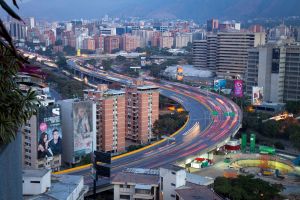This report authored by a group of experts from Brazil, Columbia, Mexico, and the United States discusses a regional vision for reducing urban violence in the Western Hemisphere.
Introduction
For over a decade now, the Americas have had the highest rates of lethal violence in the world, making violent crime part of the daily life of millions of citizens across the region. In 2017, 47 of the 50 most violent cities in the world were located in the Western Hemisphere.
Key Findings
Reducing crime and violence in urban centers has become a top priority for citizens and governments of the United States and Latin American countries alike. Rather than attempting to tackle these challenges on their own, cities across the Americas should learn from one another, exchange experiences and best practices that work, and understand the contexts in which certain strategies are effective.
To discuss a regional vision for reducing urban violence in the Western Hemisphere, a group of experts came together in Chicago in June 2018. More than 30 representatives from Brazil, Colombia, Mexico, and the United States explored the opportunities and risks of a common agenda. Chicago was a natural choice for this strategic meeting, given the prevalence of urban violence in the city and, more importantly, its concerted and interdisciplinary efforts to address it. This report reflects the highlights of the session.
A multitude of existing and past network efforts address urban violence, yet none have taken a Western Hemispheric approach for coordination and exchange. Cities throughout the Americas are implementing promising intervention initiatives from which other cities can learn. By providing cities a platform to learn about how different systems have approached the same problem and sharing the best evidence and promising innovations being implemented throughout the region, cities from different contexts can improve their efforts to reduce urban violence.
A coordinated effort should have clear leadership and a common regional vision and mission; identify specific, practical goals; focus on collecting and sharing research and evidence, frameworks, and tools; promote convening; build capacity; and foster effective evaluation of interventions.
In a region where crime and violence are so pervasive, public safety must be a top priority for every government. But governments should not have to develop solutions alone. Urban violence is a regional problem that demands a regional response. A common vision for the hemisphere will guide the region to a more peaceful and prosperous future.
This report was informed by a strategy session held in Chicago on June 14-15, 2018.


